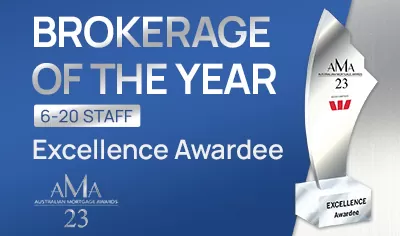Reverse Mortgage Interest Rates in Australia

FREE Reverse Mortgage Australia guide from Seniors First. 30,000+ downloads since its first edition in 2008.
Reverse Mortgage interest rates in Australia differ, depending on the lender and product type. Unlike standard home loans, these rates reflect the unique structure of Reverse Mortgages — home equity release loans designed for over 55's, with no regular repayments required.
The ultimate rate a lender offers you may also be influenced by your circumstances, and the ability of a specialist broker like Seniors First to negotiate on your behalf. Start a search for your best Reverse Mortgage rate by comparing lenders on this page.

EXPERT TIP: Even a small difference in the Reverse Mortgage interest rate can create big savings over time. Specialist brokers such as Seniors First often get access to 'secret' discounted rates, and can negotiate with the lenders on your behalf for a better deal.
Table of Contents
Compare Reverse Mortgage Interest Rates in Australia
WOW! Ask about
'secret' discount rates



EXAMPLE: A negotiated discount of just 0.20% on a $150,000 reverse mortgage could save over $5,000 in compounded interest over ten years.
Access to ‘Broker-Only’ Reverse Mortgage Rates & Negotiated Discounts
When you engage Seniors First to help with your Reverse Mortgage, you’re not limited to the same published interest rates as everyone else.
Because we are Australia’s most experienced specialist Reverse Mortgage brokers, we maintain long-standing relationships with the major Reverse Mortgage banks and lenders. This means we often have access to exclusive “broker-only” rates and special offers that are not available when you approach a lender directly.
In many cases, our team can also negotiate individual rate discounts or fee reductions on your behalf — especially for larger loan amounts or unique borrower situations.
This can save you thousands of dollars in accumulated interest over time.
Here’s how Seniors First adds value beyond the standard lender rate:
With Seniors First, you’re not just comparing Reverse Mortgage rates — you’re gaining an advocate who works to secure the best possible deal for your retirement (based on your personal needs and objectives).
Reverse Mortgage Interest Rates in Australia: Variable vs Fixed
Most Reverse Mortgage loan products in Australia currently use variable interest rates, which can rise or fall depending on market conditions. However, some older lenders offer a fixed-rate to existing borrowers.
Component
Variable Interest Rate
Fixed Interest Rate
Variable Interest Rate
Fixed Interest Rate
Variable Interest Rate
Fixed Interest Rate
Variable Interest Rate
Fixed Interest Rate
Variable Interest Rate
Fixed Interest Rate
Variable Interest Rate
Fixed Interest Rate
Variable Interest Rate
Fixed Interest Rate
Variable Interest Rate
Fixed Interest Rate

KEY TAKEAWAY: Current Reverse Mortgage lenders only offer variable interest rates in Australia. Some previous lenders did offer fixed Reverse Mortgage interest rates, but these have since been withdrawn from sale. A variable rate offers potential savings if rates fall, while a fixed rate can actually trigger large prepayment break costs under the same conditions.
What Affects Reverse Mortgage Interest Rates?
Several factors can influence the rate you’re offered:
Property type and location
Some lenders assess risk differently depending on where your home is situated, or whether it is an investment property. This may affect the interest rate you are offered.
Lender type
Non-bank Reverse Mortgage lenders and 'private credit' providers have funding models which are different from the banks. This may affect the interest rates they can offer.
Product type
Some lenders offer special Reverse Mortgage loan products with lower rates for abiding by certain conditions, such as making regular interest payments or using the loan funds to refinance an existing home loan.
RBA interest rate movements.
The Reserve Bank of Australia (RBA) sets the cash rate which generally determines the ultimate interest rate charged by the Reverse Mortgage lender. Some banks however have a poor record in passing on RBA rate cuts to reverse mortgage borrowers. A lender’s historical record on how often they pass through reductions in the RBA cash rate can be a key consideration when choosing lenders.

KEY FACT: a Seniors First survey of 602 customers found 83 per cent of borrowers regard a low interest rate as either "very important" or "critically important" in their choice of Reverse Mortgage lender.

How Reverse Mortgage Interest Works
A Reverse Mortgage loan allows you to borrow against the equity in your home without making regular repayments. Like any other loan, interest will be calculated daily at the published lender rate, and charged out monthly in arrears.
The key difference with Reverse Mortgages is that any interest cost will be added to the loan balance each month (unless you make a voluntary payment). This process is known as ‘capitalising interest’.
Over time, compounding interest starts to take effect as the interest charge is calculated on some accumulated interest cost from previous months
For example, the total balance of a $100,000 lump sum at a rate of 8.50% p.a. will roughly double after 10 years (assuming no rate changes). However, with the right loan structure it's often possible to slow down the rate of interest accumulation. Refinancing to a bank with a lower rate may also reduce overall interest rate costs.
With a Reverse Mortgage, the loan is usually repaid when:
Get more detail on how Reverse Mortgage Interest works here. Your Seniors First broker can show you personalised projections so you can understand how your loan balance may grow over time.

Why Are Reverse Mortgage Rates Higher Than Standard Home Loan Rates?
Reverse mortgages are structured differently to regular home loans.
Lenders typically don’t receive repayments for many years, sometimes even decades. This means they take on more risk and delayed repayment, which results in slightly higher rates.
The interest compensates the lender for:
Although higher than traditional mortgage rates, Reverse Mortgages are designed for long-term financial security, not short-term lending.

KEY FACT: Loan comparison is extremely difficult because each lender operates differently, and most of their eligibility criteria is not publicly available. Seniors First research identified over 150 points of difference between just the top four lenders, across product features, eligibility criteria (credit policies), and post-settlement loan procedures.
How to Minimise the
Cost of a Reverse Mortgage
There are several ways to keep the cost of your Reverse Mortgage under control:
Even small, occasional payments on your Reverse Mortgage can reduce the impact of compounding interest, and the overall interest cost. Many lenders offer a 'redraw' feature which allows you draw out later any voluntary repayments you may have made earlier.
The Reverse Mortgage market is highly dynamic, so it pays to regularly monitor your Reverse Mortgage rate against those offered by other lenders. Seniors First provides its customers with the option of loan reviews to help track if your lender's interest rate remains competitive, or if it might be time to refinance.
Although interest rate is important, it's just one of dozens of factors that go into making an effective Reverse Mortgage lender comparison. Different lenders offer unique features, eligibility criteria, and fee structure. Your Seniors First broker can guide you through these differences.
It's a little known fact that Reverse Mortgage borrowers can enjoy very substantial interest savings by drawing as much of the loan funds as possible, gradually over time (instead of as a lump sum). This is what we call the Reverse Mortgage Golden Rule.
Seniors First has been advocating for this 'golden rule' since we launched in 2006! It's one of the things that sets Seniors First apart from the lenders, and indeed from other mortgage brokers.
Home EquiSaver™ is the approach Seniors First brokers use to find the optimal loan structure for each borrower in order to maximise the compound savings interest ratio (CISR).
The Compound Interest Savings Ratio (CISR) is different for each borrower, depending on the proportion of total loan funds that is taken as an upfront lump sum, versus gradually over time. The higher the ratio, the more interest cost potentially saved - and the more benefit derived from Home EquiSaver.
See here for a detailed example of how Home EquiSaver works.

Why Use a Specialist Reverse Mortgage Broker?
Reverse mortgages are complex financial products — and no two lenders are the same.
That’s why thousands of Australians have turned to Seniors First, Australia’s leading Reverse Mortgage broker since 2006.
A Seniors First specialist broker will:
Using a broker ensures you don’t overpay or overlook important product features.
Our service is designed to save you time, protect your interests, and provide peace of mind.
Get Personalised Reverse Mortgage Rate Quotes
Every borrower’s situation is different. Your property, age, and financial goals all play a role in determining which rate and structure suit you best.
Before making any decisions, speak with one of our experienced Seniors First brokers. We’ll compare rates from Australia’s top reverse mortgage providers and help you make an informed choice.

Rated 4.9 stars on
“Sincere thanks to Andrew and Seniors First .. the loan has been life changing.”
Deborah Collett
You have given me outstanding service, guidance and help. You made clear to me the advantages, disadvantages and outcomes of a Reverse Mortgage.
You reassured me about the right timing and steps to take in the whole process.
I couldn't be more grateful and very satisfied knowing that my home loan is paid and I have enough to live comfortably.
I felt extremely comfortable working through the process. There was no pressure to continue but I am extremely glad I decided to proceed.
Seniors First were very considerate and concerned that I completely understood the pros and cons of the decision I was making. I felt at ease discussing the very involved process through very friendly and supportive phone conversations and via many emails. I greatly appreciated how I was kept up to date with the applications progress. Contact about any concerns was always welcome.
I unreservedly recommend their thorough unquestionable service. I am amazed at how smooth the process was, especially as it resulted in a very positive outcome.
Thank you for your friendly, unbelievable guidance and support.
I had heard about reverse mortgages a number of times over the past couple of years, very different from a standard mortgage. It made me a little nervous, but I did research. I rang a couple of brokers, what’s your email, if you have any questions, ring me back.
Adam Oakley from Seniors First, was the first one to truly speak to me. Answered all my weird questions, gave me so much information, and helped me all the way. Some critical information such as Centrelink, I checked up on. Adam was spot on with what he had told me. Do your own research, government web sites, brokers, and lenders so you can understand what is being explained. Taking on anything financial is a huge step, being guided (handheld, in my case) by Adam is a blessing.
The kindness and understanding shown by my broker made the entire process smooth and reassuring. He truly listened to my needs and worked hard to achieve the best possible outcome for my situation. I’m genuinely grateful for the support I received and would highly recommend Seniors First for anyone considering their financial options in later life.
Richard Chapman explained very clearly from the outset how this works and held our hands throughout the whole process, even when it got a little tricky with an outstanding level of professionalism and patience i might add.
If you are reading this and are contemplating a reverse mortgage look no further call Richard Chapman at seniors first.....first.
Dean who I dealt with to attain my Reverse Mortgage was the most friendly courteous and knowledgeable person and he is an absolute credit to Seniors First.
His knowledge and excellent PR skills were wonderful and nothing was too much trouble and he was always available to answer any questions I asked if him.
I would certainly recommend Seniors First and in particular Dean Hukin to anyone considering a Reverse Mortgage.
Frequently Asked Questions
Reverse mortgage interest rates cover the cost of borrowing, but most loans also include a few standard fees. These may include a one-off establishment or valuation fee, government charges, and sometimes a small monthly service fee. The interest itself compounds over time, meaning any unpaid interest is added to the loan balance.
When comparing products, it’s important to look at the comparison rate, which combines both interest and fees to show the true cost of the loan. A Seniors First broker can explain these fees in plain English and help you find a lender with minimal ongoing costs.
In many cases, yes — you may be able to refinance your Reverse Mortgage to another lender offering a lower rate or better features. However, it’s essential to check the fine print first. Most lenders charge a discharge fee (and sometimes a break fee), and you’ll need to meet the new lender’s eligibility and property valuation criteria.
A Seniors First specialist can compare the potential savings against the costs to determine if refinancing is worthwhile. Reviewing your reverse mortgage every year or two is a smart way to ensure you’re still getting value for money.
As of 2025, the lowest Reverse-Mortgage-style rate in Australia is offered by the Australian Government’s Home Equity Access Scheme (HEAS), which charges an annual interest rate of 3.95% p.a.. However, this option is available only to eligible pensioners and has specific limits on how much you can access.
For most retirees, there is no single “best” reverse mortgage interest rate. It will depend on which lender(s) you’re eligible with, and the rates they offer based on product type, your property location, loan amount, and whether you prefer a lump sum or flexible cash-reserve facility. Some lenders also offer special “broker-only” discounts that aren’t advertised publicly.
A Seniors First Reverse Mortgage specialist broker can compare multiple lenders side-by-side, explain how the HEAS compares to commercial products, and help you find the option that offers the best balance of interest rate, flexibility, and long-term peace of mind.
Generally, your age affects how much you can borrow, rather than the interest rate itself. Lenders use age to determine the maximum loan-to-value ratio (LVR) — the older you are, the higher the percentage of your home’s value you may access. However, age can still indirectly influence the rate offered, as older borrowers tend to have shorter expected loan terms. A Seniors First broker can show you how age, property value, and loan amount work together to determine your available equity release options.
Yes. One of the biggest advantages of modern Reverse Mortgage loan products is the improved flexibility. You’re not required to make repayments, but you can choose to make voluntary payments at any time to reduce the interest that accumulates. Even small, occasional repayments can make a meaningful difference over the long term.
Most lenders allow direct debit or BPAY transfers without penalty. This means you can stay comfortably in your home while keeping control over your loan balance. Seniors First can help you design a repayment strategy that fits your lifestyle and retirement income.



